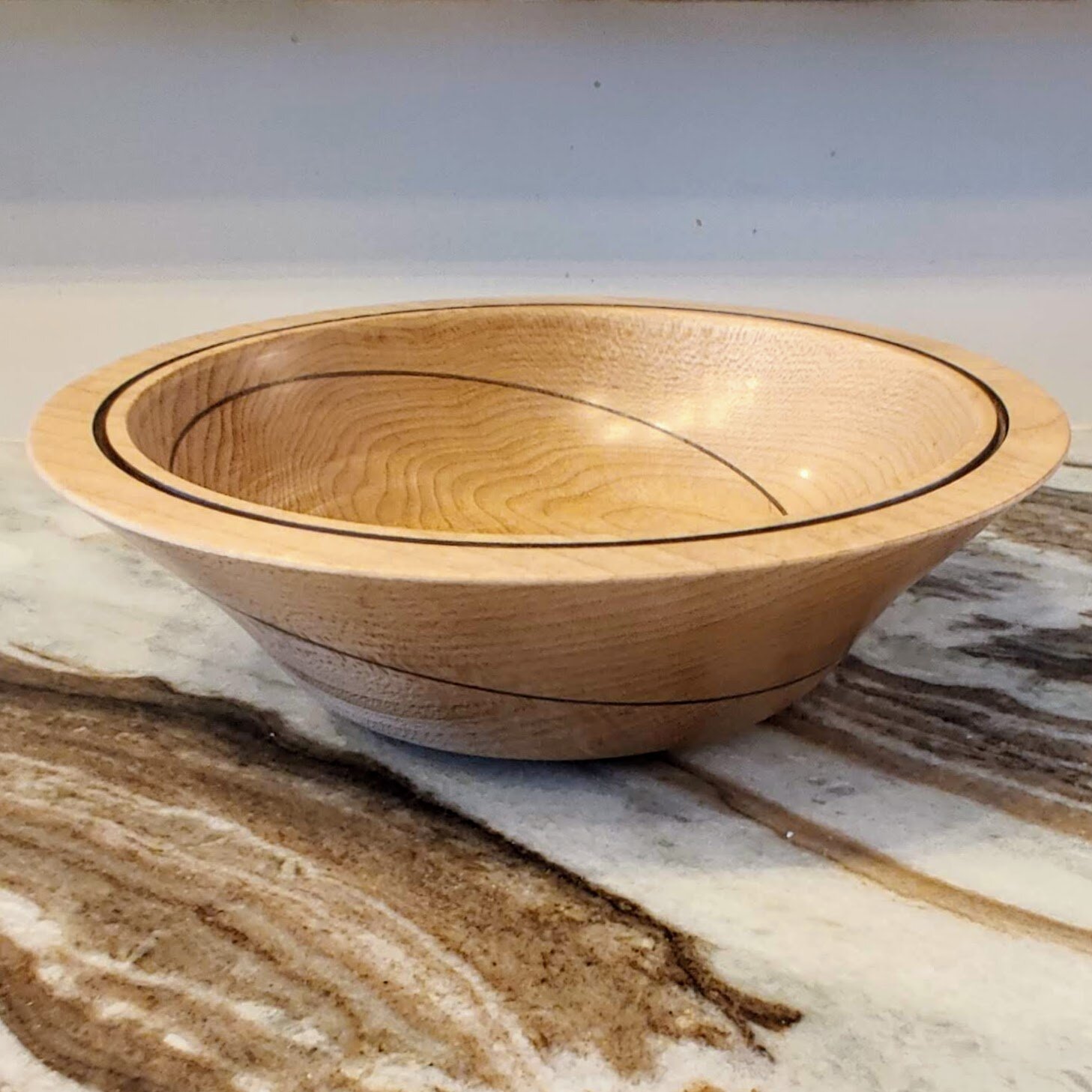I recently had a discussion with a woodworking artisan and a friend with a financial investment background and professional experience when the discussion of revenues came up. It is no secret that it is difficult to earn a living as an artisan (in woodworking in this case but perhaps it is similar in other fields). The simple fact is that few people, if any, are willing to pay for the time it takes to hand make furniture or other objects in the “traditional” manner. We are used to paying for items that have been mass-produced in places where environmental concerns are non- existent or disregarded, by low labor cost employees (who, themselves barely eke out a living, often in miserable circumstances) or items that have been made by ever improving automated machinery. This friend’s advice was classic: to make a better living, you should hire workers, preferably paying them as little as possible. Of course, this is what we learn in micro-economics 101: critical mass, cost control through standardization, automation, etc. and it reeks of using workers just for their ability to do repetitive tasks cheaper than programming large machinery - the objective is ultimately automation, standardization, serialization; it is not what my concept of artisanal work is about.
Don’t get me wrong, I am not criticizing the approach and development, nor is it a curmudgeons’ expression of unhappiness with the state of affairs, it is simply an observation from discussions with customers and prospects about the price of various hand-made objects: there is often admiration and appreciation for the work that goes into the piece and, usually, a lack of interest in paying the price that the artisan considers reasonable for the effort expended mastering the craft and the time spent making the object. This changes, of course, when the products become considered pieces of art; many of us aspire to this, few achieve it.
In the piano world there was a generally accepted division of the market into 90%-9%-1%, that is, 90% of piano shoppers were looking for a good deal (i.e., low price), 9% of piano shoppers had heard of different brands, were somewhat aware of differences between them, and wanted a “name brand” (albeit at a discount), and 1% of piano shoppers knew exactly the sound that they wanted and would scour the earth to find it - price was not an object of concern. I found it interesting that so many of the brands that the general public had heard of, were fighting for that 1% of the market… but I digress…
Unless an artisan’s product range can be standardized, such that each individual product within the range can be replicated exactly, it is difficult to justify adding employees other than in the “back office” (order processing, marketing, accounting, etc.) where efficiency gains from critical mass can be achieved. Indeed, there are a number of places where independent artisans group together to share retail space - even sharing the time needed to sell. This makes sense since retail locations usually require 50% of the sales price or a significant price per square foot for exhibiting products for sale - small artisanal operations have little to no leverage with retail outlets with regards to cost of selling space. so it pays to produce more and to be bigger. But when products become standardized, adding production employees to fulfill production needs raises the following question: at what point does “artisanal” just mean “hand made”?
According to the Oxford Dictionary, “artisanal” relates to the characteristics of an artisan (artisanal skills) and thereby of a product made in a traditional or non-mechanized way. To me, this implies not only the work itself, but the tools used to make it as well. So, in fact, a larger operation with many workers may still be considered “artisanal” as long as the methods used to produce products remains traditional.
Well, this is a bit contrary to what I was thinking initially…
In fact, I was also wondering about this because of my purchase of a CNC machine. I wondered if I was destroying the artisanal “mantra”. But here, I thought, I could automate a certain number of work steps, as if I had a worker, while keeping costs low and flexibility high. (Flexibility is often just a term to avoid saying “too lazy to properly lay out the work steps to manufacture a product”, or, in my case, non-standardized products that may require changing the order of work - take your pick which one fits best).
What I discovered with the machine, however, is that its use is greatest in making totally new products around its capabilities (which means broadening the product offering). Thinking that the two could be a trade-off was seriously de-valuating a worker’s contribution since a worker can contribute in a multitude and variety of tasks, not necessarily all requiring exactly the same skill. And a good worker can pay for him/herself by adding value in a number of areas such as product refinement, development, process improvement, etc.
This leads me to view in a positive light the traditional approach of apprenticeships. When they are supported by education and include standards for quality of work, it allows a win-win relationship with aspiring artisans: they find practical work in which they can hone their skills under the watchful eye of an experienced, successful artisan, and the artisan can receive valuable contributions from a young, motivated worker at a price that (s)he can afford. If there is enough gain to be had, it can become a long-lasting employment relationship and, ultimately, a partnership which allows transition of the business to the younger partner.
I suppose the conclusion, after this meandering thinking, is quite simply that it makes sense to hire a worker when the volume of sales allows it. The motive for hiring starts from the opposite side as the motive of the friend who suggested that to be profitable you must hire since my conclusion is that hiring workers is a consequence of making fine products that many people buy. That is important if only because it defines the work contribution differently. And in hiring, you may continue to be an artisanal shop. Good news!




